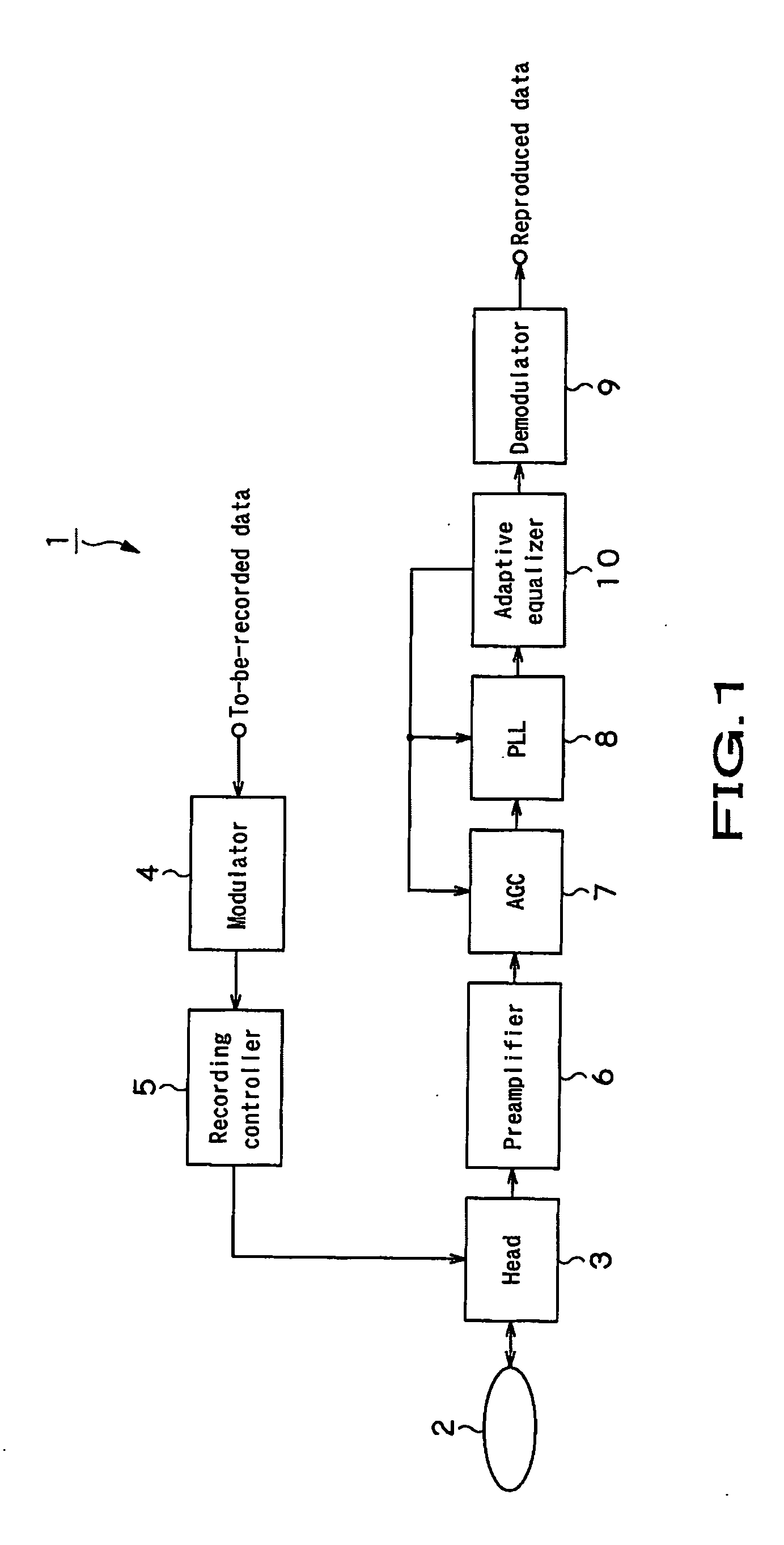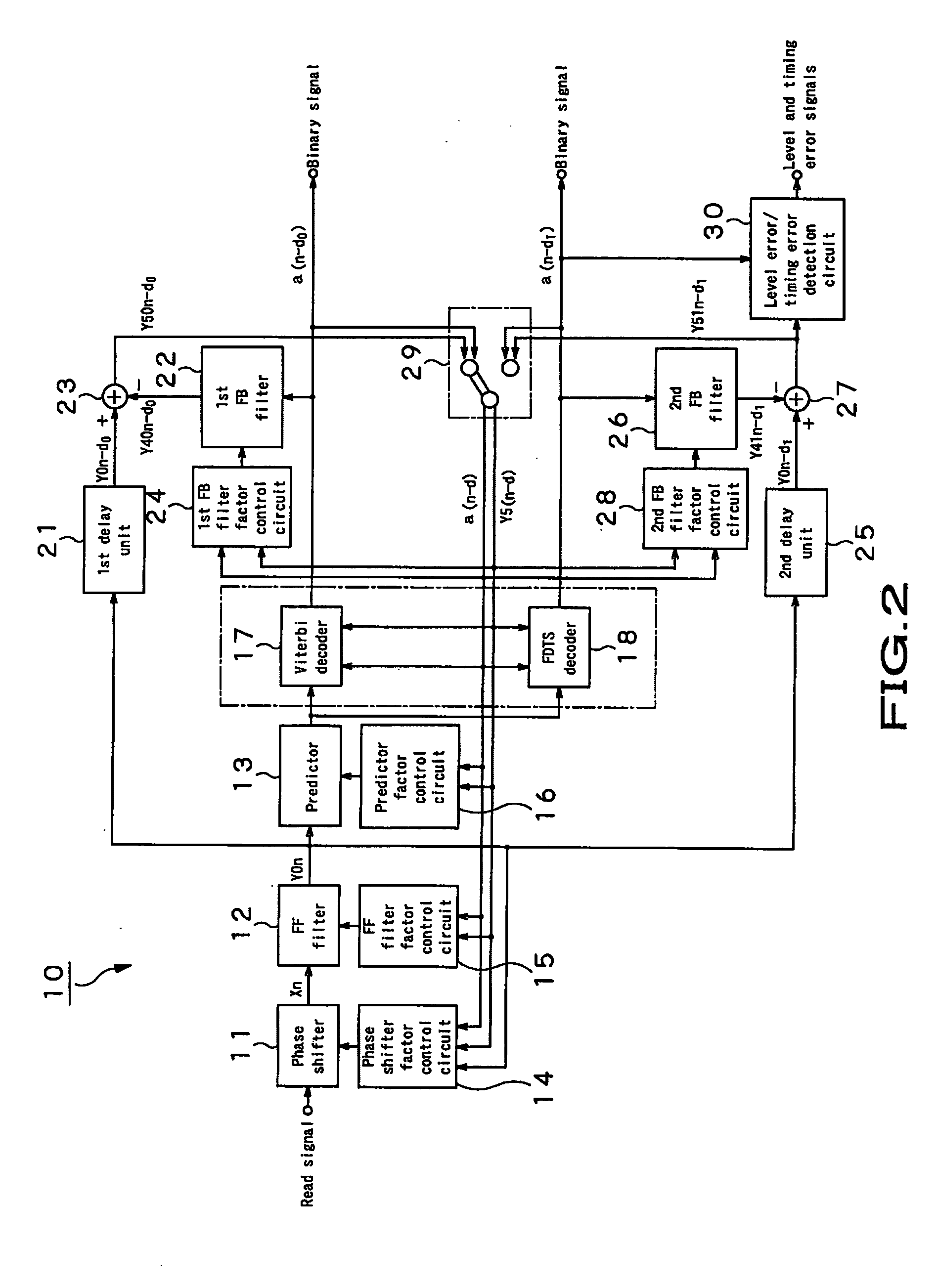Adaptive equalizing apparatus and method
a technology of equalizing apparatus and adapter, which is applied in the direction of digital signal error detection/correction, line-faulst/interference reduction, and with built-in power, etc., can solve the problems of a large decoder performance degradation, a bit error rate (ber), and a frequency domain which cannot be equalized by any means, and achieves a low error rate and high error rate
- Summary
- Abstract
- Description
- Claims
- Application Information
AI Technical Summary
Benefits of technology
Problems solved by technology
Method used
Image
Examples
Embodiment Construction
[0070] The present invention will be described in detail below concerning the adaptive equalizer as an embodiment thereof.
[0071] Referring now to FIG. 1, there is schematically illustrated in the form of a block diagram a recorder / player, generally indicated with a reference numeral 1, incorporating an adaptive equalizer 10 according to the present invention.
[0072] As shown in FIG. 1, the recorder / player 1 is an apparatus to write and / or read data to and / or from a disk-shaped recording medium2 such as an optical disk, magnetic disk or the like. The disk-shaped recording medium 2 is capable of a signal recording which allows inter-symbol interference during playback on the presumption that the playback system is a transversal filter. Also, the disk-shaped recording medium 2 is a disk which records a row of coded data, and the data is read from the disk by the maximum-likelihood decoding such as Viterbi decoding or FDTS decoding.
[0073] The recorder / player 1 includes a head unit 3 w...
PUM
| Property | Measurement | Unit |
|---|---|---|
| processing | aaaaa | aaaaa |
| processing time | aaaaa | aaaaa |
| signal-to-noise ratio | aaaaa | aaaaa |
Abstract
Description
Claims
Application Information
 Login to View More
Login to View More - R&D
- Intellectual Property
- Life Sciences
- Materials
- Tech Scout
- Unparalleled Data Quality
- Higher Quality Content
- 60% Fewer Hallucinations
Browse by: Latest US Patents, China's latest patents, Technical Efficacy Thesaurus, Application Domain, Technology Topic, Popular Technical Reports.
© 2025 PatSnap. All rights reserved.Legal|Privacy policy|Modern Slavery Act Transparency Statement|Sitemap|About US| Contact US: help@patsnap.com



